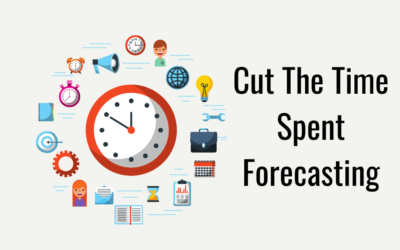External Factors in Forecasting Accuracy
How big of a role do external factors such as geographical location, weather, and market conditions play in the accuracy of forecasting?
If you are not sure how would you go about determining their effect?
Impact of external factors
Where external factors are truly having an impact on demand the consequences for miscalculating their impact is the same as any other variable. You run the risk of damaging customer relations, increasing costs, and reducing profits.
The important questions we must answer in this case are:
What external factors are impacting my demand?
What impact do these factors have on-demand?
Traditionally the answers to these questions would be based upon the views of the individual producing the forecast.
The fundamental flaw with this approach is the same as any variable. It relies upon the ability of an individual to accurately analyse the relationships between variables correctly and extract the correct information.
Unfortunately, humans tend to be very bad at this.
Humans are also at the mercy of their own experiences and biases. We normally think of these as being bad but they may be totally valid. For example, if an individual completing a forecast is in a location that is regularly affected by poor weather conditions they are likely to put a greater emphasis on this variable. By comparison, if someone in the same company works in a location where the weather is not an issue they will put less emphasis on this variable.
You could argue that neither of these individuals is incorrect but it will result in errors when the company-wide forecast is reviewed.
Solution
The solution to improved forecasting accuracy is not to limit the number of variables or to ignore the changing importance of these variables between location or product but rather to improve the analysis of data to identify true patterns and their cause.
The methodology that has delivered the best results and most consistent results is the use of artificial intelligence and machine learning. Specifically by leveraging the artificial intelligence principal of Identifying patterns and anomalies
Machine learning is particularly good at identifying patterns and finding anomalies or outliers. The “pattern-matching pattern” is one of the repeating approaches to AI projects that has seen wide and increasing adoption. The goal of the Patterns and Anomalies pattern of AI is to use machine learning and other cognitive approaches to learn patterns in the data and learn higher-order connections between data points to see if it fits an existing pattern or if it is an outlier or anomaly.
Using machine learning in this way means there is no one true way of doing things but rather a constant process of analysis, testing, and refinement is occurring.
As an example, the iERP forecasting module has over 50 different algorithms for calculating the demand. With the ability to use different algorithms for different products and to even change the algorithm month to month based on the variables being passed into the AI.
Results
Here are some of the results we have achieved at iERP through our platform.
99% (it has been every customer but we can’t claim 100%) has seen an improvement in the accuracy of their forecasting simply by adding their historical data into iERP
98% is the average forecast accuracy
8% the percentage increase in profitability
Over £1million in capital released from unnecessary stock.



